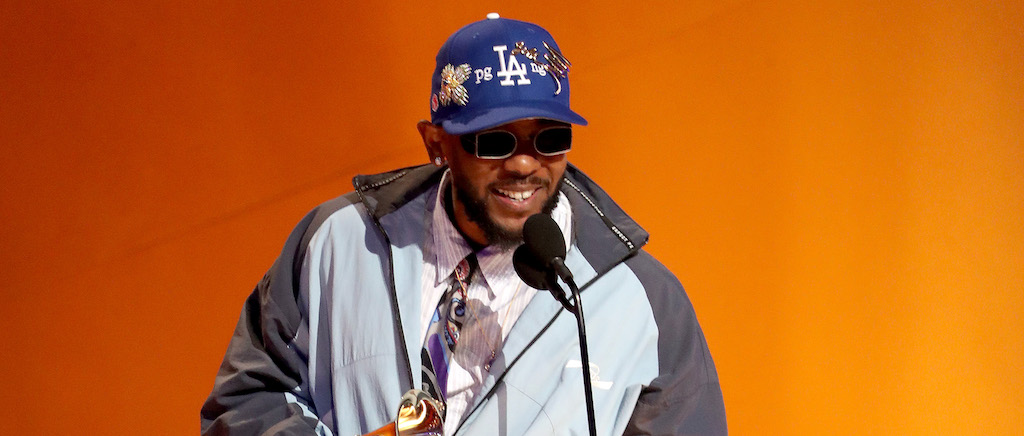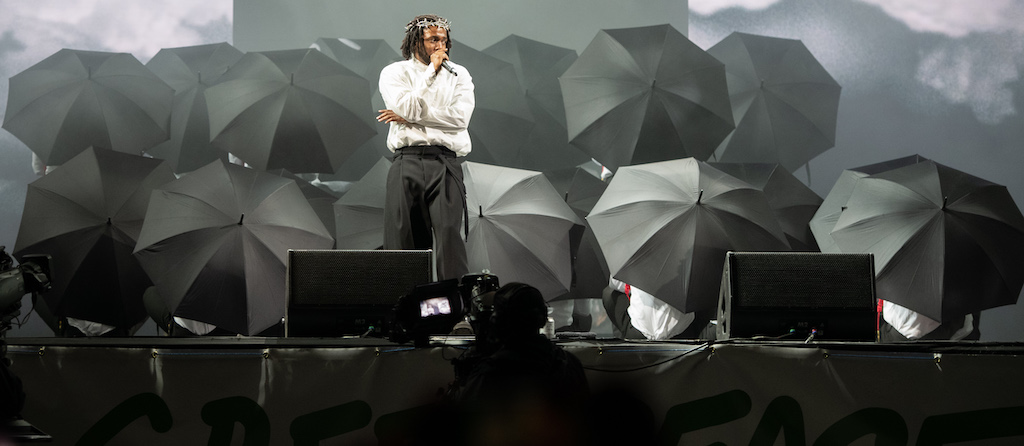Kendrick Lamar’s Big Steppers Tour is just as electrifying, frustrating, and mystifying as the album it promotes. In May, when Kendrick released Mr. Morale & The Big Steppers, it received a polarizing response from fans who weren’t quite sure how to parse the dense themes or the Compton rapper’s handling of those themes. While some observers like Pusha T and Tyler The Creator praised the album’s lyrical dexterity and honesty (especially on songs like “Auntie Diaries“), others were put off by the discomfort of hearing Kendrick get cussed out by his lady on “We Cry Together” and his questionable stance on COVID conspiracies on the probably overly metaphorical “N95.”
None of that stopped Mr. Morale & The Big Steppers from going straight to No. 1 on the Billboard 200 in its first week with the biggest streaming and sales week of 2022 to that point. Say what you want about how tangled and obscure K. Dot made his Top Dawg swan song, but he is still one of hip-hop’s brightest-shining stars. And really, on Thursday night at Staples Center — sorry, Crypto.com Arena (ugh) — he shined as brightly as he ever did, even as the album’s strained symbolism threatened to throw a lampshade on the whole affair.
The thing about symbolism and metaphors is that they are only really as effective as the audience’s ability to readily interpret them. Jesus spoke in parables, Aesop taught in fables, and American Southerners have dozens of witty aphorisms for just about every situation imaginable. But something I’ve noticed over the last few years — and you may have, as well — is that a lot of the truths those lessons were designed to teach have been lost on a lot of us. It may be easier for a camel to fit through the eye of a needle than a rich man to get into heaven, but that hasn’t stopped supposedly devout evangelicals from hoarding wealth. The Old Woman and the Doctor might well condemn the greed inherent to the medical profession but it’s still a billion-dollar business.
So it goes with Mr. Morale. Kendrick was disinterested in providing a codex for translating the hyper-confessional project, which may have contributed to its divided reception. Likewise, the show also eschews easy interpretation, incorporating shadow play, fraternity marches (big steppers, get it?), and oblique references to the ongoing pandemic that hewed dangerously close to Hotep bullshit. On one hand, the staging is remarkably stark; Kendrick spends much of his time alone on the stage, with little going on around him to distract from his always dazzling performance. On the other hand, when Kenny’s dancers re-emerge a half dozen times to line step around him in various outfits, it feels both cluttered and hashed together, like it’s supposed to mean something, but nobody ever took the time to figure out what.
Maybe I have been to too many arena shows at this point, but in terms of theme and aesthetic presentation, this might have been the least impressive one I’ve seen in a while. What was on display was Kendrick’s star power, the fact that he could basically just stand there on stage and do nothing and elicit an explosive reaction from the audience — which is why I wish he’d left goofy gimmicks like a barely utilized ventriloquist’s dummy and the plastic quarantine cube in his imagination. Even his wardrobe — a white nudie suit with “Compton” airbrushed on the back worn with a sparkling bedazzled glove on just one hand like a certain King Of Pop with an eroded legacy — gave “half-baked allusion to other, more thoughtfully-produced ideas.” I mean, was the MJ reference an effective homage in the context of the thesis or just derivative? I still can’t decide.
Meanwhile, that suit called to mind another recent piece of pop culture that turned out to be polarizing but that I loved. In Jordan Peele’s recently released summer blockbuster Nope, Steven Yeun’s Ricky “Jupe” Park sports a similarly elaborate getup in his UFO-themed rodeo show as he seeks to create a spectacle that can both return him to the spotlight and ease his trauma from his last run-in with notoriety. However, Jupe has learned all the wrong lessons and pays the price for his hubris; Nope, as has been repeatedly stated throughout the film’s press run, is about the dangers of spectacle for spectacle’s sake.
That isn’t to say that Kendrick is in any danger of flying too close to the sun himself — yet. But it is starting to feel like he’s entering the messy, late-stage Kanye West phase of his career, where the appearance of meaning in his art is starting to become paramount to actually conveying a message that audiences can pick up loud and clear. Over the past few weeks, Kanye has given us plenty of cause to consider cults of celebrity being built on spectacle, and how easy it is for artists to lose touch and start buying their own bullshit. In an arena with thousands of people screaming for your every move and hanging on your every word, it’s easy to believe the hype — why else would someone loosely compare themselves to one of the biggest global pop stars to ever exist when they aren’t anywhere near the same level of celebrity?
I questioned all of this when I guested on Spotify’s RapCaviar Podcast a few weeks ago — ironically, through another metaphorical tale, The Emperor’s New Clothes. But maybe that’s the point of all the silliness, too. Maybe it’s a way for Kendrick to ground himself, to poke fun at the pretentiousness of it all — one of the running themes of the album that gets highlighted on “Savior.” Either way, as a fellow Comptoner, I have always rooted for Kendrick Lamar. May he always remain that kid from Compton and never lose sight of that humility, however bright the spotlight gets.






